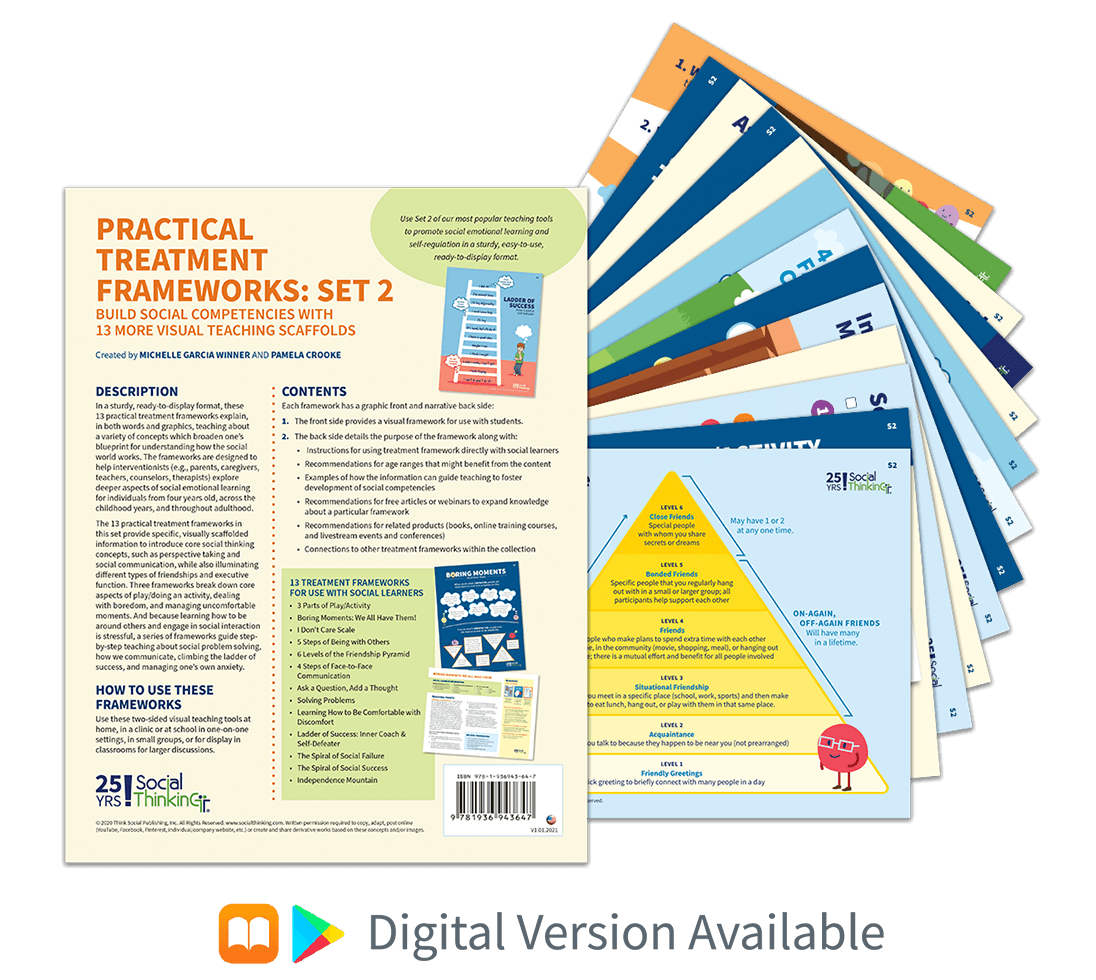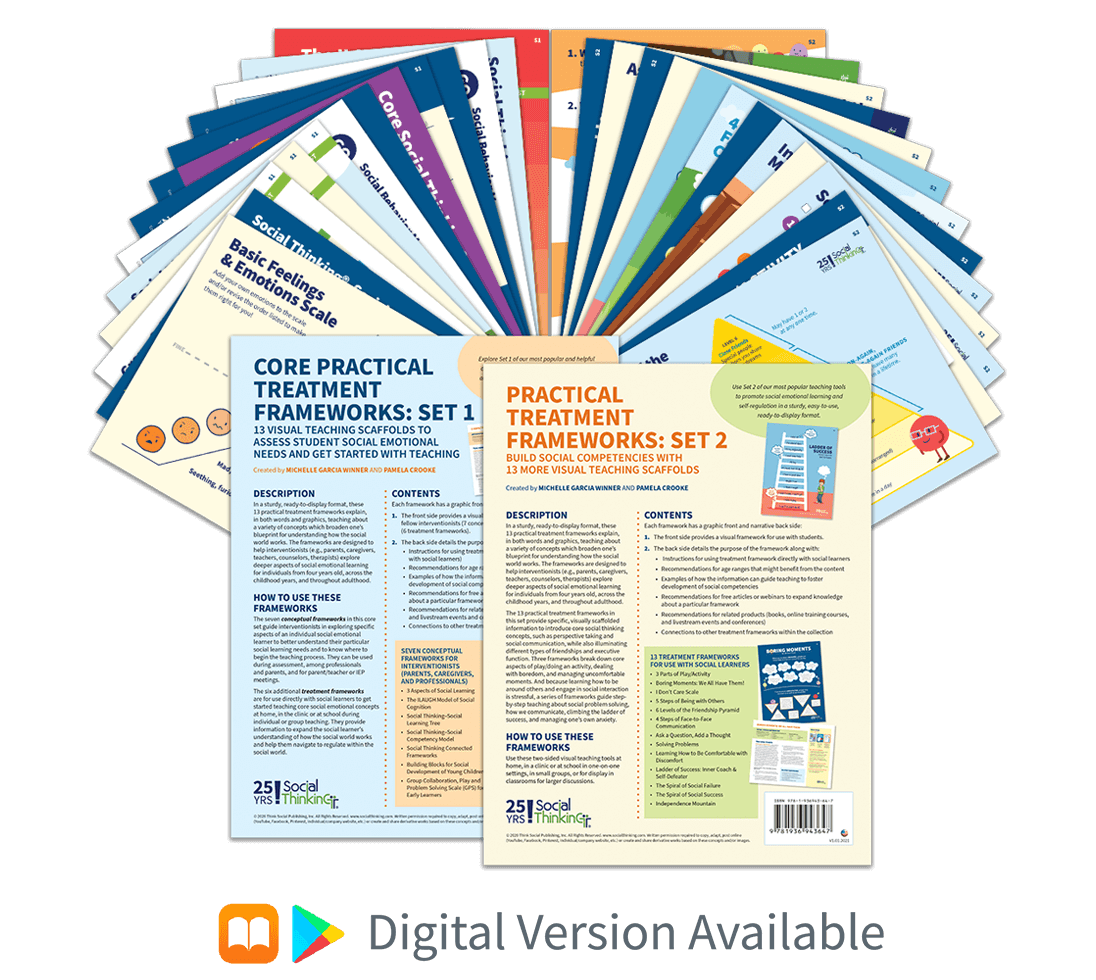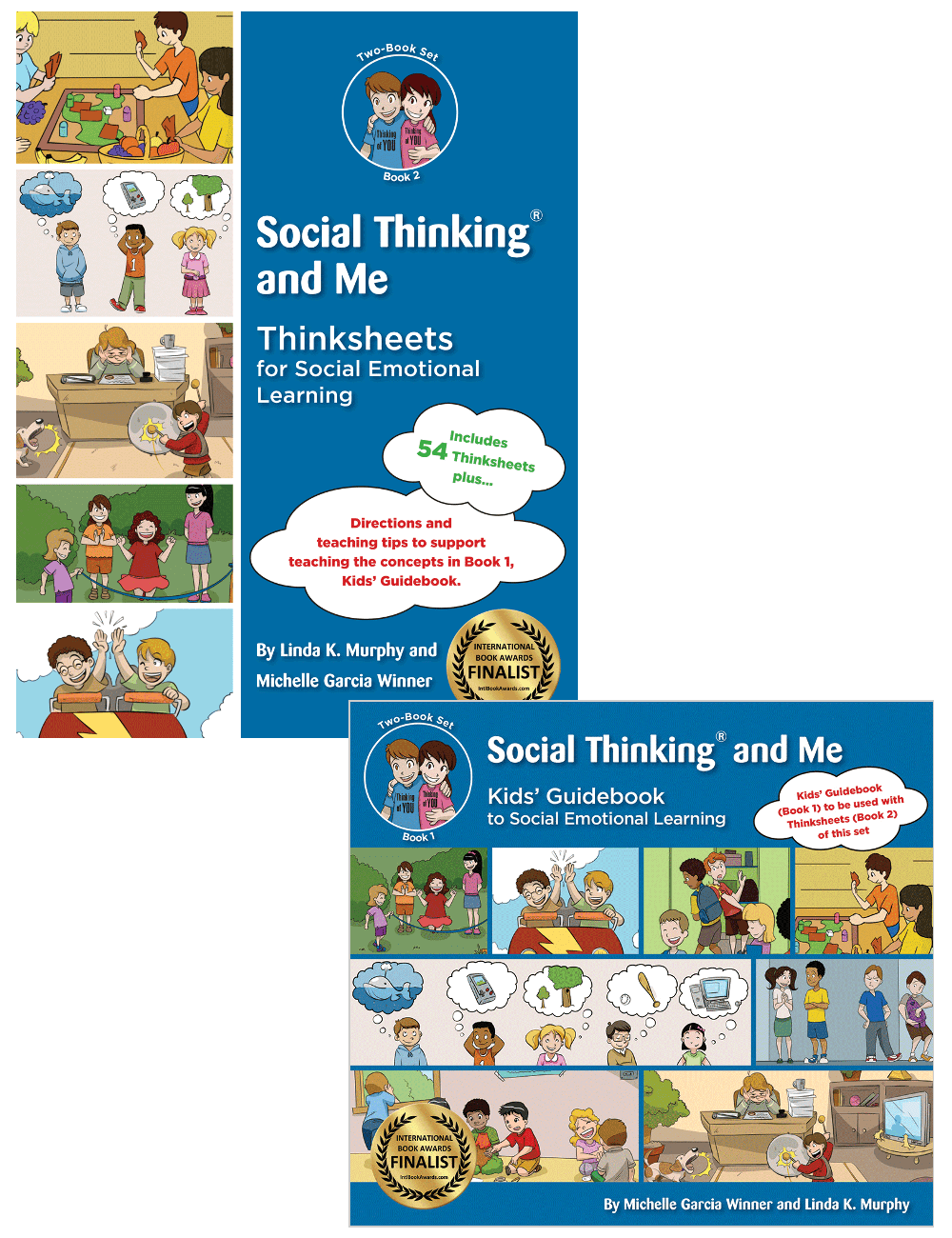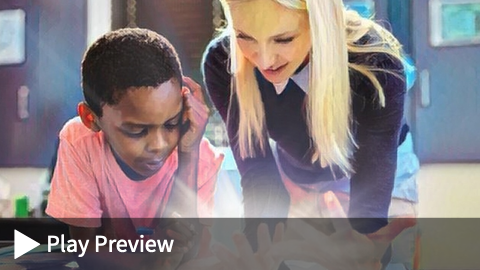Updated: May, 2022
© 2022 Think Social Publishing, Inc.
We wish when we don’t have a plan, but we hope when we think we can do something for ourselves. Let’s help our social emotional learners tap into and develop the cognitive processes required to engage in hope-oriented thinking. In his book, The Hope Circuit (Seligman, 2018), Dr. Seligman describes our brains as having a “default circuit” which will lead us to feeling helpless if put in a situation that we feel is beyond our control. Contrary to popular belief, the brain does not learn to feel helpless; it naturally goes there if factors push it in that direction. Upon recognizing this in his lab, Dr. Steve Maier, a longtime colleague of Dr. Seligman, went in search of how the brain avoids the many problems associated with feeling helpless and he discovered what Dr. Seligman ultimately coined “The Hope Circuit.” In a nutshell, our brains, when faced with a dilemma, seek to engage aspects of reasoning and thinking to figure out how to avoid the helplessness trap. While this sounds obvious in some ways, consider how many times we expect individuals with social emotional learning differences and/or challenges to perform a set of behaviors for which they may not yet have the competencies, creating in them a feeling of helplessness and hopelessness. How can we help them shift into using thinking and reasoning to create a pathway toward improved social competencies, rather than simply expecting them to know how to behave?
Metacognition Activates the Upstairs Brain for Social Emotional Learning
Dr. Siegel and Dr. Payne Bryson (The Whole-Brain Child, 2011) describe the brain as having an “upstairs” and a “downstairs.” Clearly, the upstairs brain, also described by others as “higher cortical functioning” or “higher order reasoning,” involves the hope circuit. The downstairs brain has many functions for life support but also involves sensing, feeling, and reacting, often impulsively, to what we have experienced, what we are experiencing, or what we worry we might experience in the future. Have you ever had a student cry for 45 minutes about schoolwork that he or she has not even begun to try to work on? While the downstairs brain is reactive, the upstairs brain is contemplative. Dr. Stephen Covey, in his book, The 7 Habits of Highly Effective People (Covey, 2013), discusses what he read by a psychologist whose name he cannot recall: “There is a space between stimulus and response.” In short, this means that within this “space” we have moments to reflect and engage thinking and reasoning to figure out the best ways to proceed in a given situation. To manage that space is to use metacognition in our upstairs brain. Moreover, language is also a core member of the thinking and reasoning team.
Over the years, we have become convinced that to develop increasingly sophisticated social competencies, language is an essential component. We know that the building block of perspective taking, also referred to as theory of mind, is co-dependent on the development of language (de Villiers, 2007). Language, perspective taking, and visual awareness of situational cues merge developmentally so that we grow in our ability to socially attend, interpret, problem solve, and respond to situations of all kinds; from the more basic—whom to greet when walking down the hall—to the really complex, such as socially problem solving what to do during something as huge and complicated as the COVID-19 pandemic.
Self-Regulation Within a Group Requires Metacognition
While this sounds logical, if not easy, it’s anything but when you think about it! Consider that we think of the use of language as having two dimensions, expressive and receptive, and we seek to measure these through standardized tests. Yet, there is another incredibly important dimension of language not often discussed when it comes to exploring academic performance, group work, and self-regulation: our use of language inside our mind for understanding the social world and how we can possibly navigate to regulate in that world through the use of our inner thought processes. For example:
- How do I consider my own thinking and feelings?
- How do I think about another’s thinking and feelings?
- What do I think that person is intending based on what they are doing and saying?
- How do I want people to read my intentions?
- How could others possibly be reading my intentions in ways I hadn’t considered?
We use forms of language inside our minds to contemplate our own and others’ thoughts, intentions, and feelings. We also problem solve to consider how to respond to the social situation based on our own desires, while also considering how others expect us to behave or how they will possibly feel and think about our response.
In reading this, you might think this type of internal dialogue and direction relates to older children, teens, and adults, but consider that this is likely the type of reasoning we expect of three- to four-year-old children when they are learning to self-regulate in small groups. For example, when working with little ones, the teacher has a short time during the day called “circle time,” a time in which children gather together with a shared purpose of following the teacher’s lead and exploring a concept as a group. The teacher asks a question to all the children in the group, but only one child is chosen to answer it. Think about all the information that is being considered within the mind of each child who is actively participating at this time. What does active participation mean? For most, it means they are sitting in the group, considering the teacher’s intentions, and thinking about the concept she has introduced. Many children know the answer to the teacher’s question, but to work as part of a group, they also have to know not to say the answer if the teacher is calling on another student.
Now consider that most children in this scenario are purposefully not doing something: they are not saying the answer out loud, they are not running around the room, they are not facing away from the group. This is their upstairs brain at work: they are figuring out what the teacher is talking about, but they have also figured out how to be part of the group in a specific situation and are actively learning when to share and not share the information they have in their minds. This ability is what we depend on for individuals to cooperate and learn in social groups in all aspects of our society, home, school, vocation, and broader community. Yet, this internal language and reasoning, which helps guide our ability to problem solve how we are to respond to those around us defies standardized test measurement. The term associated with this mental process is social metacognition.
Cognitive Behavior Therapy and Metacognition
Metacognition most typically is described as our ability to reason and think about our own thinking and feelings. While most of us experience metacognitive thinking without being fully aware of it, counselors, psychologists, experts in mindfulness, and the Social Thinking Methodology process shine a spotlight on it. Helping us to develop awareness of our own internal conversations, or mind chatter, helps us to improve how we manage our internal messaging. One form of internal chatter can uplift or encourage us (inner coach voice), but more often this voice may sound demeaning (self-defeating voice). As we learn we can take control, even over our internal, judgmental thinking, and better understand the relationship this has to our feelings, the more we can learn to take control of our social mind and have hope for more positive outcomes in our life and this helps switch on our neurologically based “hope circuit.”
Developing a more robust understanding of ourselves and our internal thinking to help manage our thoughts is the basis of cognitive behavioral therapy (CBT). An adult client recently explained that one of the most important things his psychologist taught him was that “my thoughts are not necessarily true.” CBT is a critical tool for helping individuals cope with chronic flooding of negative emotion, anxiety, social anxiety, and depression and its focus is to heighten awareness and acuity of their metacognitive abilities to help them feel better in their own skin.
However, our brain is not limited to only thinking and reasoning about self-regulating our inner feelings and thoughts—since we exist in the presence of others. Dr. Michael Tomasello, a cultural anthropologist, describes that beginning in infancy we develop a form of “self-otherness.” He means we carry within our minds an ever-present knowledge that our existence is considered, felt, and thought about by those around us. Not only experienced by those with whom we are interacting, but also by those with whom we share space or co-exist.
Social Problem Solving Requires Social Metacognition
The term “social metacognition” is discussed by researchers and philosophers (Briñol & DeMarree, 2012) to explore how our minds consider the thoughts and feelings of one or many other minds as part of our own social metacognition. Recently, we asked an audience of about 400 people to estimate how many people they had to be aware of in the audience throughout the day, even when they had no plans to relate to most of the people that surrounded them. Most answered that they must consider the needs of all the people in the room for the conference day to seamlessly continue without confusion or disruption. Now consider this: how many minds must a student consider when sitting in a classroom of thirty other students and a teacher? Clearly, our social metacognitive abilities are not only focused on keeping ourselves calmer and more comfortable solely for the purpose of feeling better all by ourselves. Our social metacognitive mind doesn’t get a lot of rest; it is supposed to be vigilant whenever we are in the presence of others, including many of our own or others’ pets!
While language is an essential ingredient, our internal language and visual understanding of the social world fuel our ability to reason. Social reasoning is the doorway to social problem solving. Over the years, we have noticed that several individuals with whom we work have terrific science reasoning but may struggle with social reasoning. They exhibit solid to strong test scores related to their receptive and expressive language and academic learning abilities, yet struggle with social metacognitive reasoning. A 32-year-old engineer with a PhD went to a psychiatrist because he experienced chronic compelling anxiety and depression. Ultimately, she referred him to our clinic, and it became apparent that he had subtle but significant social issues. He reported struggling to understand others’ intentions. He asked, “How can I be considered such a good problem solver as a computer engineer, but such a weak problem solver when it comes to figuring out people.” A dilemma he experienced was why a person he knows from work group meetings, with whom he is not friends, would want to talk to him when standing in line for lunch? His not knowing how to handle the situation cranked up his anxiety and contributed to his depression. Early in treatment, I mentioned that I understood where the anxiety came from, but asked him to explain the connection to depression. He replied, “Think about it. If I am constantly anxious about people, that’s pretty depressing!” One day I asked him to try to describe how his internal thinking process worked. The next week he reported that he realized he “thinks in pictures.” I asked if he had ever heard of Temple Grandin or read her book, Thinking in Pictures, and he said he had not.
We started by using a visual teaching framework called Solving Problems Before They Become Problems. He found it really helpful and asked to take it home. What he discovered was that he could problem solve situations better if he thought with language and not just exclusively with pictures. He discovered that visual images helped to some extent, but his language was what was helping him to explore differing points of view, feelings, possible reactions, and how we might verbally respond across a range of imagined social situations. Language-based reasoning is critical for social problem solving within our minds, in the same way that verbally expressed language is important for having discussions and conversations.
Social Emotional Learning Is a Carefully Scaffolded Process
Throughout the past 25 years, the Social Thinking Methodology continues to evolve only because we continue to learn from many different individuals what they find confusing about the social world. The information we have been developing taps into social metacognitive reasoning. We also have been learning that both neurotypical and neurodivergent individuals can benefit from social emotional coaching to explain the social world and how to better learn to navigate and regulate within it. Both young children and senior citizens use their internal reasoning to make sense of each other and realize people are simultaneously trying to make sense of us. Our social mind, after all, is our meaning maker!
How the social world works and how we work in the social world are synergistic, meaning they are endlessly layering upon one another. Nevertheless, when the mind is purposefully learning (rather than intuitively learning), we can only teach people to focus their social attention and interpretation on one concept at a time. Our teaching materials always start with priming students’ social emotional learning with how the social world works, prior to guiding them in problem solving to figure out what to do. Bottom line: If interventionists are using our methodology as it was developed, they will never just attempt to teach or change a behavior.
The storybook You Are a Social Detective! helped many social learners, ages five to ten years old, learn about themselves as observers and interpreters in the social world and provides a framework for later social metacognitive learning. The comic book introduces some core Social Thinking Vocabulary (e.g., social smarts, think with your eyes, body in the group, and more) while also introducing the Social Emotional Chain Reaction. Through language and pictures, students are introduced to information and strategies for learning how to reason more actively about how we all impact each other, even when we are simply sharing space and not actively engaging in a conversation.
Between the visual imagery, direct teaching about how the social world works, and how each of us is learning to work in the social world, we see active engagement of children’s minds, imagination, and, most importantly, their desire to learn about themselves, their brains, others’ thinking, and their own impact on themselves and others through their behavior.
Social Metacognition Is a Ready Tool for Switching on the Hope Circuit
Learning to understand one’s thinking and actions in the social world is not only about successes but also about knowing when we are overwhelmed and why. If we can acknowledge when things are not going great for us, we can avoid feeling helpless and push toward hope as long as we also understand that what we are experiencing is temporary. A mother of a 9-year-old boy shared the following personal story with us:
My son has recently started learning about Superflex with his speech- language pathologist. It has given him vocabulary and a way of thinking to help him to understand his own thoughts. Last night he was being really negative about everything…This is what he said about the encounter:
“After being ambushed by Negasaurus Nix and Kenny Can’t, I have fired all of my Thinkable guards. Rock Brain perforated Positive-saurus Fix’s shield, so he quit, and Kenny Can retired. So that’s it. I was just ambushed and I lost.”
We avoid helplessness by acknowledging that things may be difficult in the moment, but not for the rest of our lives. If you think this all sounds a lot like learning to self-regulate, you are right! If you think the hope circuit is related to goal-oriented thinking and, therefore, engages executive functions, you are correct again! Another remarkable thing about fueling a student’s social metacognitive learning is that when we teach a student to think, they carry their thinking out the door.
Below is an email where a 19-year-old university student living away from home for the first time reflects on how our social learning sessions in high school continue to help him with university life, including living in the dorms and going to the cafeteria every day. This same student was a freshman in high school four years earlier. He began working with me by insisting, “I don’t want to make a friend! I only want to learn how to cope with all the jerks…and believe me EVERYONE is a jerk!”
Another challenge was making myself to sit with groups I knew, even though it was extremely easy to go to the bench seating and eat alone. To remedy this, I thought of how boring it would be to eat alone all the time, which always initially seemed to be a good idea. But as the school year progressed, my mindset became:
“I prefer to eat with others for the most part because it’s always more exciting to get to know others more.” This let me realize that my high school lunch experience provided me with the practice, and now I was ready to take the [college] cafeteria head on.
Language as a metacognitive teaching tool breaks the social world open to explore different perspectives, intentions, and feelings. It gives us different ways to think flexibly, critically, and with compassion for ourselves and others. It cracks a diamond into myriad facets. The more expressive we are with our metacognitive internal and external language, the more we can understand and respond to people in context. Whether we are four years old, 14, 40, or 70, language can explain, at differing levels of complexity, how all the cultures in the social world work to help people navigate to regulate within their social world.
Rather than take language for granted, let’s view it as an essential tool for helping us reason and problem solve how to achieve the outcomes we seek for ourselves and others. The amazing social mind has to engage in organized, yet flexible, thinking as part of our social metacognition. And when our minds can’t figure it out, that’s when we ask questions to learn from others’ minds.
Think about it. At the core of our ability to live, learn, work, and enjoy being together is our ability to make sense of each other. To move from helplessness to hope is the job of the mind. Let’s provide our social learners with the tools to actively engage their social metacognitive mindsets.
References
Briñol, P., & DeMarree, K. G. (Eds.). (2012). Social Metacognition. Psychology Press.
Covey, S. R. (2013). The 7 Habits of Highly Effective People: Powerful Lessons in Personal Change. Simon & Schuster.
de Villiers J. (2007). The Interface of Language and Theory of Mind. Lingua. International Review of General Linguistics, 117(11), 1858–1878. https://doi.org/10.1016/j.lingua.2006.11.006
Madrigal, S., & Winner, M. G. (2008). Superflex®: A Superhero Social Thinking® curriculum. Think Social Publishing, Inc.
Seligman, M. E. P. (2018). The Hope Circuit: A Psychologist's Journey from Helplessness to Optimism. PublicAffairs.
Siegel, D. J., & Bryson, T. P. (2011). The Whole-Brain Child: 12 Revolutionary Strategies to Nurture Your Child’s Developing Mind. Bantam Books.
Winner, M. G., & Crooke, P. (2020). You Are a Social Detective: Explaining Social Thinking to Kids, 2nd Edition. Think Social Publishing, Inc.

















